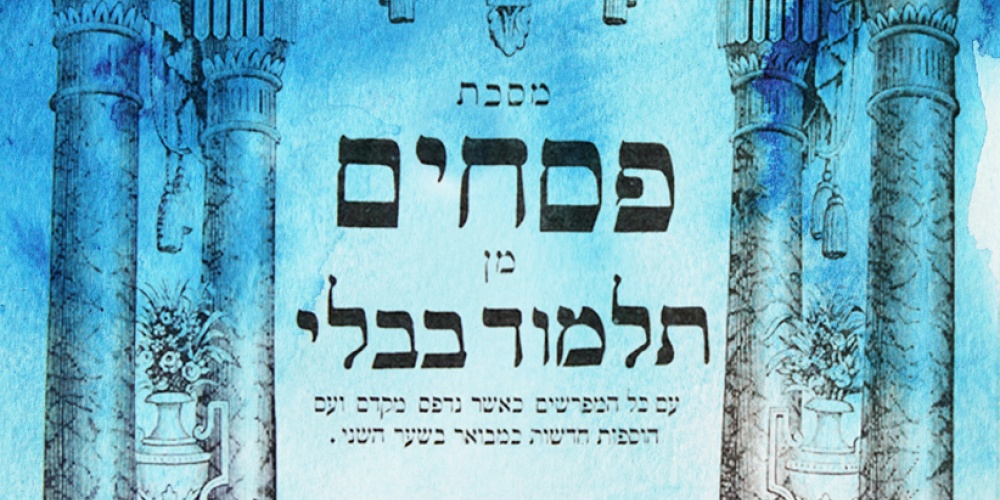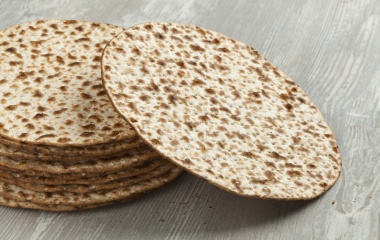
The task of editing involves critical decision-making. Beyond questions of language and syntax, an editor must decide what to include and what to exclude, and how much prominence to give to any particular story. This is doubly true when editing an anthology of material from multiple sources spanning hundreds of years, the task that lay before Rebbe Yehuda Hanassi, the final editor of the Mishna. So vast were the rabbinic texts before him that some 95% of the potential material was left out of the Mishna, finding its way instead into the Braitta, Tosefta, or just plain lost to Jewish history.
Making order out of this vast amount of material was a yeoman’s task, one that actually began two generations earlier with Rabbi Akiva. As is well known, Rebbe divided the Mishna into six orders, the shisha sidrei Mishna, which were in turn divided into 63 masechtot, some 525 chapters, and close to 4,200 Mishnayot. But what to include and how to organize it is much more difficult than one might imagine. Commentaries, for example, have long struggled to understand why such topics as tefillin, tzitzit, mezuzah, and Chanukah are not discussed in the Mishna.
Determining which teaching should go where is no simple task. Why, for example, does masechet Shabbat begin with the laws of carrying, yet the 39 melachot are not mentioned until the 7th chapter? Why is half of masechet Rosh Hashanah dedicated to the laws of the sanctification of the new moon[1]? And then the order of masechtot must be determined. Often the first question in a masechet is taana heicha kai, where is our teacher, the taana, coming from—i.e., why is this particular teaching following the previous one? [2]
When Rebbe came to organize masechet Pesachim, he faced a key editorial decision. The masechet has two broad themes: the laws of chametz and matzah, and those relating to the korban pesach. Rebbe could have, as the Rambam did nearly 1,000 years later, separated these two topics, [3]. The laws of chametz and matzah appear in Sefer Zmanim, the book the discusses the holidays, and the laws of the paschal lamb appear much later in Sefer Korbanot, along with the laws of other sacrifices. Rebbe could have placed the laws relating to the korban pesach in seder Kodshim, which deals with the Temple service. Yet he chose not to do so.
Rather, he placed these laws right in the middle of the masechet, taking up five of the ten chapters in masechet Pesachim, highlighting the central importance of the korban pesach to the holiday. On the surface, Rebbe structured the masechet chronologically, beginning with bedikat chametz on the evening prior, continuing with the obligation to rid ourselves of chametz in the morning, followed by the custom of not doing work the morning of erev Pesach (not working in the afternoon is an actual law), the bringing of the korban pesach in the afternoon, and concluding with the laws of the seder that night. With the seder concluding with the eating of the korban pesach, the masechet ends with a discussion of the bracha on the korban pesach.
While we associate Pesach with the eating of matzah, it is the eating of the korban pesach that is of much greater importance. The matzah, food fit for a slave, is to be eaten as a side dish to the roast lamb chops, food fit for a king. And while we must remember that we were slaves—lest we enslave others—Pesach is the time to celebrate our freedom, so much so that failure to bring the korban pesach when the Temple stood rendered one liable for karet, excision. This was only one of two positive mitzvot for which failure to perform them leads to karet[4].
A similar dynamic plays out in masechet Yoma, where seven chapters detail the special Temple ritual on Yom Kippur, leaving just one lone chapter to discuss the Yom Kippur that we know, the one focused on fasting. Rebbe could have easily included these chapters in seder Kodshim and put the last chapter in masechet Ta’anit, dealing with our fast days[5]. Yet by creating a separate masechet Yoma—“The Day”, i.e., Yom Kippur—which deals primarily with the Temple service, Rebbe is indicating that is the essence of Yom Kippur. In fact, the last Mishna has Rabbi Akiva comforting the Jewish people who, upon the loss of the Temple, imagined that Yom Kippur could no longer bring atonement. While the Temple service had to followed to the letter to effect atonement, ultimately, it is G-d who brings atonement, and He can do so Temple or not—provided we repent.
The korban pesach and the Yom Kippur avodah are above and beyond the special korbanot mussaf that were brought on all biblical holidays, including Rosh Chodesh. These korbanot mussaf get barely a mention in the discussion about the holidays.
Masechet Sukkah spends a total of one Mishna discussing the korbanot mussaf, even as they are more than double in number of those brought on the other festivals—and even then, the subject is dealt with in a most peripheral way, focusing on which of the 24 mishmarot, groupings of kohanim, will get to do more than one korban on any given day. Clearly, korbanot play a relatively minor role in the celebration of Sukkot. It is the dwelling in sukkot and the arba minim that are the focus of the Temple[6].
Korbanot do not even get a mention in the four chapters of masechet Rosh Hashanah. It is prayer and shofar—shofar being prayer without words—that are the focus of the day. And reading the entire corpus of the Mishna, one would be hard pressed to find reference to Shavuot and Shmini Atzeret, not because they are unimportant, but because they serve as the concluding days of other holidays. Shavuot is the "50th day of Pesach" and Shmini Atzeret, the "eight" day of the seven-day Sukkot festival, is a day to celebrate the feeling of closeness to G-d that has grown during the past holiday season. As such there are few mitzvot specifically relating to those days.
The korban pesach signifies the willingness of the Jewish people to defy the idolatries of the day, to take concrete action to demonstrate our willingness to stand up publicly for what we believe in. It is the prerequisite to becoming a free and independent nation. And it is the korban pesach that that is front and centre as we begin the study of masechet Pesachim.
[1] As this is a very superficial overview, we will not discuss the question of why the laws of kiddush hachodesh end with the first Mishna in the third chapter, with the laws of shofar following in the second Mishna. Seemingly, it would have made more sense to have the first Mishna of the third chapter as the last of the second.
[2] As a practical matter, with rare exceptions, within each seder the masechtot are ordered in descending order based on the numbers of each chapters in each masechtot.
[3] The Rambam writes that he sees himself following in Rebbe’s footsteps, organizing the vast corpus of rabbinic literature into an organized and coherent whole.
[4] The other being brit milah. It is not by chance that one who is not circumcised may not eat from the korban pesach. Those who fail to enter the personal covenant cannot join in the national redemption.
[5] This would fit nicely with the last Mishna in the masechet which, among other things, teaches that Yom Kippur was the happiest day of the year.
[6] There were many special Temple services on Sukkot—the special water libations, the aravot, simchat beit Hashoeva—which are described in the Mishna, but the korbanot themselves get barely a mention.



